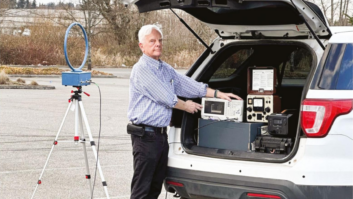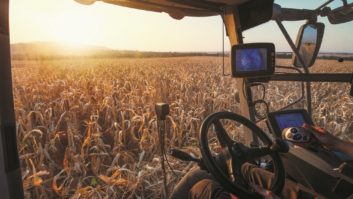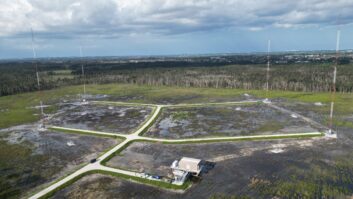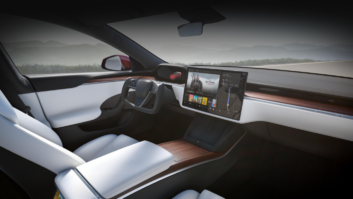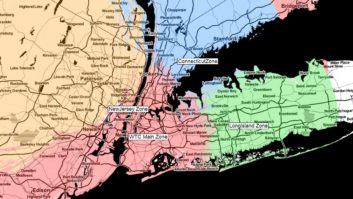Radio World’s “Guest Commentaries” section provides a platform for industry thought leaders and other readers to share their perspective on radio news, technological trends and more. If you’d like to contribute a commentary, or reply to an already published piece, send a submission to [email protected].
The author has been in radio engineering since 1963.
I was reading one of these fear-mongering articles about the entire U.S. power grid failing and how all electricity will go off forever. Whether it’s caused by overloads, forest fires, weather events or a solar flare, the soothsayers say it will happen. Not being knowledgeable about how the entire grid works, I guess they might be correct.
Reading articles on this subject, my big takeaway is: Are you prepared?
They recommend that people stockpile supplies: food, water, medicines, flashlights, candles, batteries and a battery- or crank-driven radio. Hmmm, you know, that’s a great idea. While television may stay on the air, very few people have battery-operated sets. There are fewer who don’t rely on cable or satellite, both of which will fail in a large power outage.
We also know about the reliability of the internet and cell phones. Whether it’s fiber, copper or wireless, there are way too many repeaters, amplifiers or nodes that can fail without power. A cell site might have a generator, but the interconnections probably don’t; again, it’s out for the duration. Plus, how do you charge a phone when there is no power? Most land-line phones now are fiber or VoIP; without the termination in the home being powered, they too are down.
This leaves us with good old radio, AM or FM. That’s why the Federal Emergency Management Agency suggests that Americans keep radios in their emergency kits.
But how many stations are prepared to be the only link between emergency services and the population in a crisis? From what I see, not too many.
Let’s assume a massive power failure, a tornado, a flood or other natural disaster. (I wrote this before Hurricanes Fiona and Ian, by the way.) How many stations have replaced their reliable, owned STL equipment with IP equipment? Here you are, the one form of communications that can serve the public — and your lifeline to the transmitter is owned by something or someone over which you have no control.
Don’t tell me your internet stream will be up. It won’t; and no one will have a working computer or cell phone to listen. Your transmitter is the most important item.
Do you have AC generators at your studio AND transmitter sites? Are they in working order? I wager that no more than half of the stations I’ve visited in the past year have generators that would start and run reliably. Dead batteries, old fuel, no fuel, mice-chewed wiring, broken fan belts, no coolant — you name it, I’ve seen it.
If you don’t have a generator at the studio or a backup link to the transmitter, is there a studio at the transmitter site where people can go to maintain service? If you use IP links to the transmitter, maybe you should dust off your old Marti gear and set it up as a backup. Of course you also need some kind of automatic switch at the transmitter site because if the IP is down, the remote control is probably down, and audio into the transmitter is going to have to be switched by automatic means or a trip out to the site.
There are other points in your chain that can be “hardened” but the big failure points are loss of power and loss of connection to the transmitter.
Even though technology is nice, simple is better. An analog radio link with one transmitter and one receiver might produce noise of –60 instead of –120; the distortion might be a half a percent higher; but you’ll be on the air and maybe the only connection the population has with anyone else.
[Read More Guest Commentaries Here]
Don’t wait
An urban area where I worked was hit by a major hurricane. The entire metro flooded when the river overflowed. Every station but one was down. The AM sites were along the river and were submerged. Most stations used telco lines to the transmitter, but telephone exchanges were underwater.
The station that remained on the air was an FM standalone. Its studio was at a higher elevation and had a generator. The transmitter was on a mountaintop and also had a generator; and they used a composite radio STL.
In this instance, emergency management had to evacuate their own office because it was underwater (as was the EAS primary). They moved to a school building at a higher location. The Army Corps of Engineers then ran a single twisted pair from the school through the streets to the studio of the FM station that was on the air. They put a set of magneto telephones on the line, and I tied the studio end into the station’s hybrid. The quality was lousy. But it was the only way of disseminating information for almost a month until other stations and the phone company got running.
In a book published later, there was a chapter titled “Radio, the Hero of the Hour.” It makes you feel really good to know you had something to do with it.
IP links are an excellent means of STL. But if you want to make sure you are on the air during a disaster, don’t put your reliance on a third party like a cellular provider, cable TV provider or ISP. You are simply another customer; and when your link goes down, it will be repaired “sometime.”
Now is the time to ask what you need to do to make your station deserving of the credit FEMA gives you when it urges Americans to keep a working radio in their emergency kits.
Emergency Kit
In 2020 the FEMA published a list of supplies that would help a person survive for several days. FEMA recommends assembling these in airtight plastic bags and putting them in portable containers such as plastic bins or a duffel bag.
The list includes a gallon of water per person per day; three days’ worth of non-perishable food; a battery- or crank-powered radio and a NOAA Weather Radio with tone alert; flashlight; extra batteries; first aid kit; whistle (to signal for help); dust mask; plastic sheeting and duct tape; moist towelettes; garbage bags with plastic ties (for personal sanitation); manual can opener; local maps; and cell phone with chargers and backup battery.
Additional items might include cloth face coverings; soap, hand sanitizer and disinfecting wipes; prescription medications, pain relievers, anti-diarrhea medication, antacids and laxatives; prescription eyeglasses and contact lens solution; infant formula and supplies including diapers; pet food including extra water; and cash or traveler’s checks.
Also: Important family documents; a sleeping bag or warm blanket for each person; change of clothing; fire extinguisher; matches in a waterproof container; feminine supplies and personal hygiene items; and mess kits, paper cups, plates, paper towels and plastic utensils.

